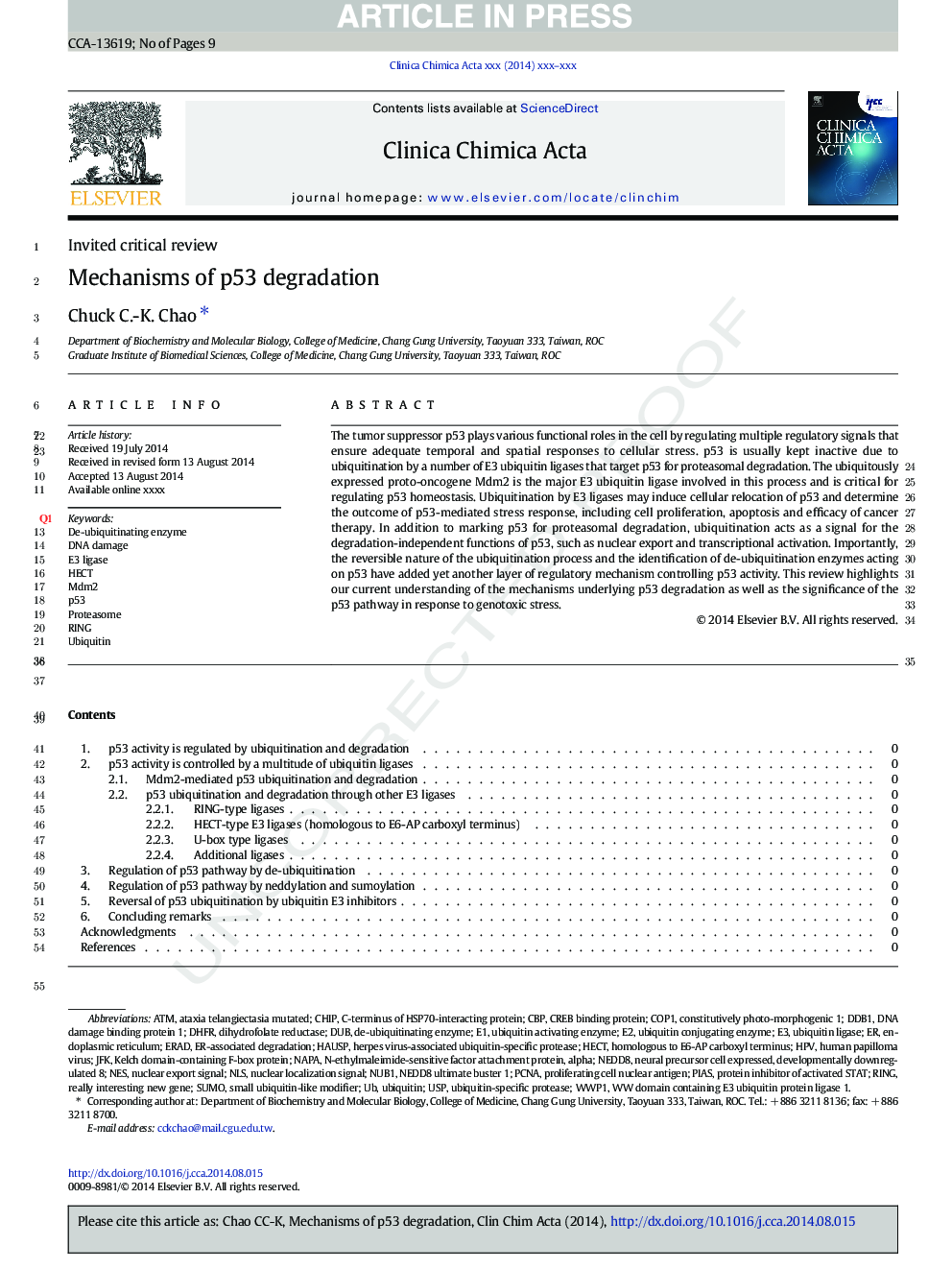| کد مقاله | کد نشریه | سال انتشار | مقاله انگلیسی | نسخه تمام متن |
|---|---|---|---|---|
| 8311353 | 1538660 | 2015 | 9 صفحه PDF | دانلود رایگان |
عنوان انگلیسی مقاله ISI
Mechanisms of p53 degradation
دانلود مقاله + سفارش ترجمه
دانلود مقاله ISI انگلیسی
رایگان برای ایرانیان
کلمات کلیدی
nESDe-ubiquitinating enzymeC-terminus of Hsp70-interacting proteinHauspNUB1NEDD8DDB1COP1DUBHECTNAPAUbiquitin activating enzymeERADCBPNLSataxia telangiectasia mutated - Ataxia telangiectasia جهش یافته استdhfr - Dhfrubiquitin conjugating enzyme - ubiquitin conjugating آنزیمubiquitin ligase - ubiquitin لیگازER-Associated Degradation - تخریب ER-AssociatedATM - خودپردازdihydrofolate reductase - دی هیدروفلات ردوکتازnuclear export signal - سیگنال صادرات هسته ایnuclear localization signal - سیگنال محلی سازی هسته ایendoplasmic reticulum - شبکه آندوپلاسمی Human papilloma virus - ویروس پاپیلومای انسانیHPV - ویروس پایپلوم انسانیCREB binding protein - پروتئین اتصال CREBCHiP - چیپ
موضوعات مرتبط
علوم زیستی و بیوفناوری
بیوشیمی، ژنتیک و زیست شناسی مولکولی
زیست شیمی
پیش نمایش صفحه اول مقاله

چکیده انگلیسی
The tumor suppressor p53 plays various functional roles in the cell by regulating multiple regulatory signals that ensure adequate temporal and spatial responses to cellular stress. p53 is usually kept inactive due to ubiquitination by a number of E3 ubiquitin ligases that target p53 for proteasomal degradation. The ubiquitously expressed proto-oncogene Mdm2 is the major E3 ubiquitin ligase involved in this process and is critical for regulating p53 homeostasis. Ubiquitination by E3 ligases may induce cellular relocation of p53 and determine the outcome of p53-mediated stress response, including cell proliferation, apoptosis and efficacy of cancer therapy. In addition to marking p53 for proteasomal degradation, ubiquitination acts as a signal for the degradation-independent functions of p53, such as nuclear export and transcriptional activation. Importantly, the reversible nature of the ubiquitination process and the identification of de-ubiquitination enzymes acting on p53 have added yet another layer of regulatory mechanism controlling p53 activity. This review highlights our current understanding of the mechanisms underlying p53 degradation as well as the significance of the p53 pathway in response to genotoxic stress.
ناشر
Database: Elsevier - ScienceDirect (ساینس دایرکت)
Journal: Clinica Chimica Acta - Volume 438, 1 January 2015, Pages 139-147
Journal: Clinica Chimica Acta - Volume 438, 1 January 2015, Pages 139-147
نویسندگان
Chuck C.-K. Chao,